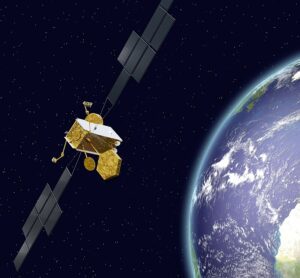There were few major announcements related to satellite and launch orders during November. Perhaps the biggest was actually a non-order, but rather the withdrawal of Northrop Grumman from tendering for the UK Ministry of Defence’s Skynet 6 communications satellite series. Northrop Grumman’s original bid partner Airbus DS is continuing with its bid for the contract.

An artist’s impression of Skynet 6a in orbit. Courtesy: UK Ministry of Defence (MoD)
Of the orders made during the month, most were small or extensions to existing ones:
The major order of the month was from the US Space Force (USSF). While the financial details are obscure, the USSF has given Millennium Space Systems an order for the production of six ballistic and hypersonic missile tracking satellites for use in medium Earth orbit as part of the Epoch 1 constellation.
Rocket Lab has confirmed that it will be launching a small spacecraft with MIT called the Venus Life Finder in 2024. It will use a autofluorescence nephelometer to try to detect the presence of organic compounds in the Venusian clouds. The launch is expected to use a special version of the Electron rocket.
Rocket Lab also announced that, after completing one, it has been awarded four more Hypersonic Accelerator Suborbital Test Electron launches to be made in the 2024-25 time period by defense contractor Leidos. Another suborbital flight will carry the HyCat experimental scramjet-powered hypersonic vehicle made by the Australian company Hypersonix for the US Department of Defense’s Defense Innovation Unit (DIU).
As mentioned in our story on the UK Space Conference, the UK is to part fund the construction of one of the first four satellites of the 16 satelite Spanish/Portuguese Atlantic Constellation which will provide Earth Observation and communications services. The UK-based company, Open Cosmos will build the UK’s Pathfinder satellite.
Quantum Space plans to launch its Scout-1 sensor technology test satellite on a Transporter rideshare mission aboard the Falcon 9 rocket probably in 2024. The satellite will be a forerunner for a communications, navigation and space situational awareness constellation for GEO and Cis-Lunar environments called QuantumNet.
While Blue Origin’s New Glenn rocket is yet to fly, on its maiden flight will be a NASA mission: Escape and Plasma Acceleration and Dynamics Explorers (ESCAPADE). This will ba pair of spacecraft to measure the magnetosphere of Mars and its interation with the solar wind. The low cost contract is valued at US$20 million for what will be a very high risk initial launch.
Firefly Aerospace has been given the launch contract by the Australian firm Fleet Space Technologies to carry its SPIDER lunar lander to the Moon’s Far side, probably in 2025. SPIDER stands for Seismic Payload for Interplanetary Discovery, Exploration, and Research.
While its Hakuto-R lunar lander crashed, i-space (Japan) is determined to succeed and is planning to launch a lunar lander called Resiliance carrying a very small 5 kg rover in late 2024.
Intuitive Machines has confirmed that its is planning to three lunar landing attempts in 2024: IM-1, IM-2 and IM-3. Each will use a Nova-C lander design and all will be launched on Falcon 9 launches, the first of which will be in January next year.








